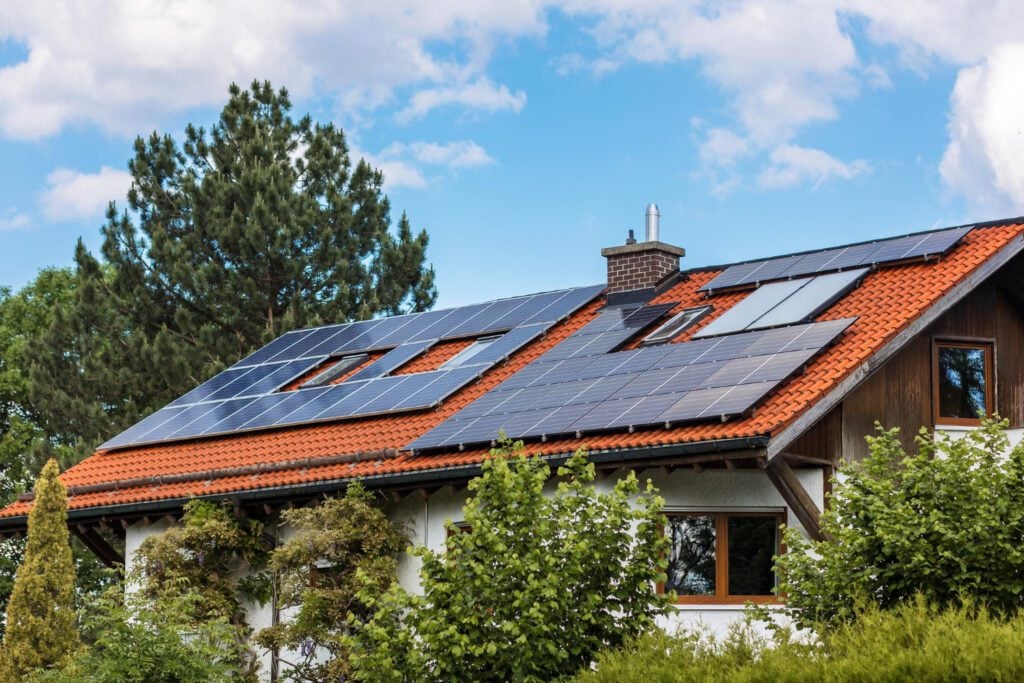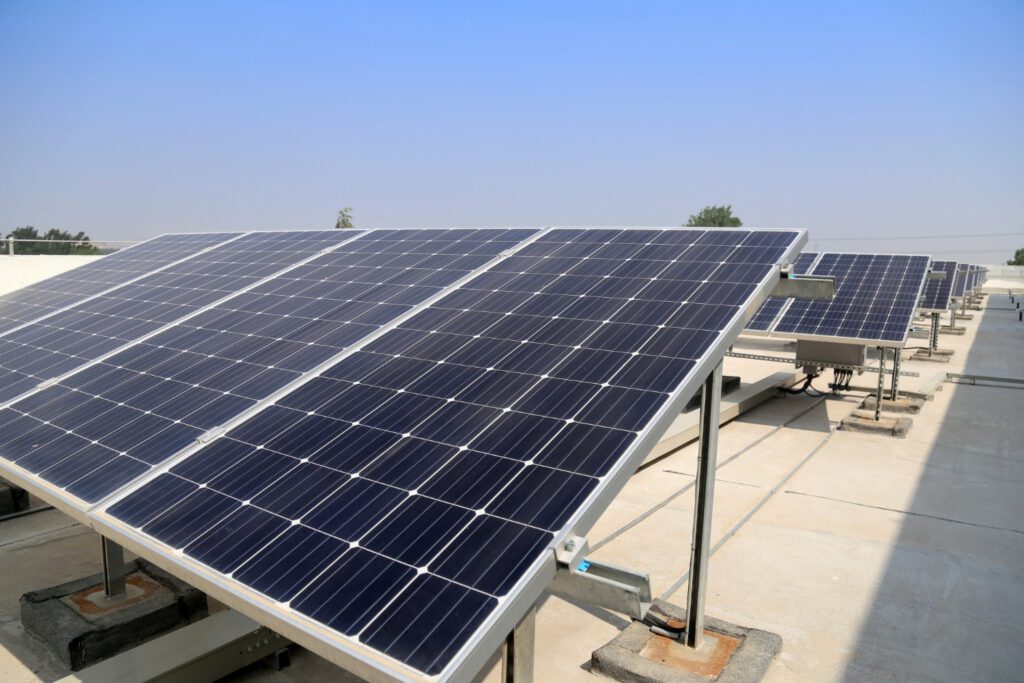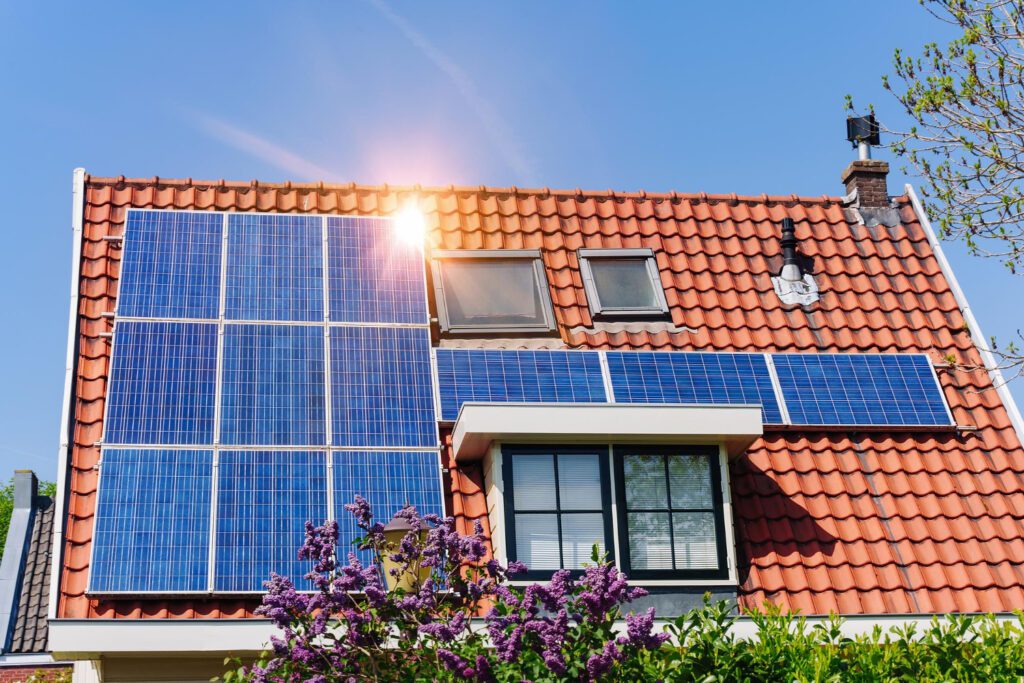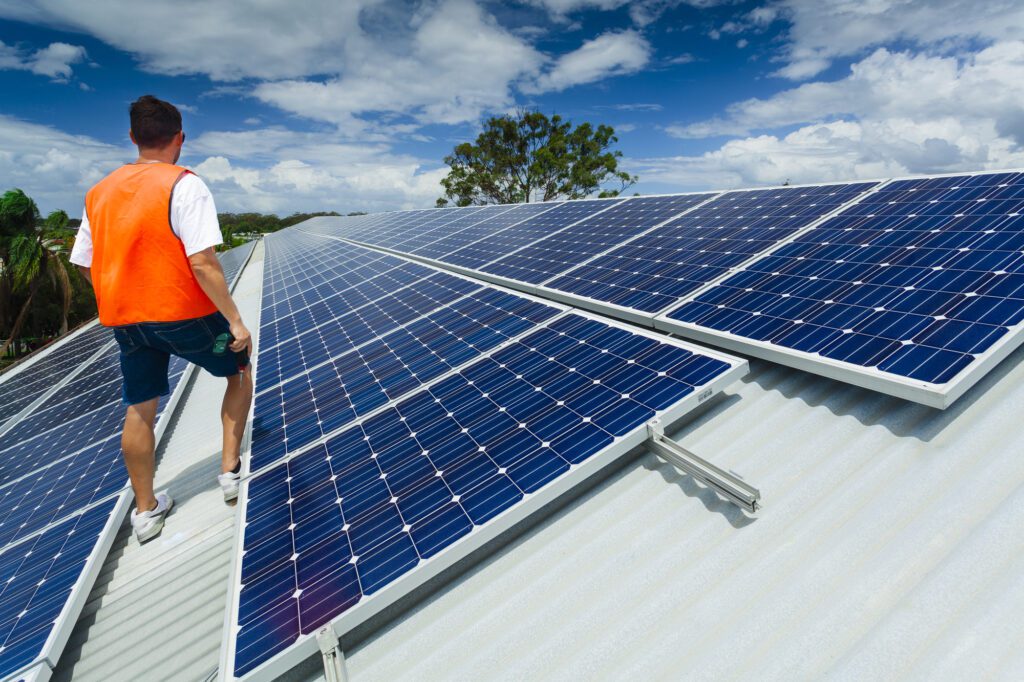With a shift towards sustainability and rising utility costs, many people in the Netherlands are looking for more ways to generate clean, affordable energy. It’s no surprise, then, that solar panels are growing in popularity.
Inderdaad, solar panels have become relatively affordable and widely accessible, not to mention the wonders they’ll do for your bank account and the environment!
Here’s what you should know about installing and owning solar panels in the Netherlands.
- The pros and cons of installing solar panels in the Netherlands
- The cost of solar panels in the Netherlands
- What type of solar panels can I get in the Netherlands?
- How to maintain solar panels in the Netherlands
- Okay, you’re in! How do you get solar panels installed in the Netherlands?
- Frequently asked questions: Solar panels in the Netherlands
The pros and cons of installing solar panels in the Netherlands
Of course, everything comes with its advantages and disadvantages, including solar panels. But don’t let that stop you from considering a leap to solar energy.
The advantages of installing solar panels in the Netherlands
Let’s start with the best things: the advantages of Dutch solar panels!
✅ You’ll save money on your electricity bill
An obvious pro is that generating your own electricity at home means a cheaper electricity bill — and we all need this nowadays.

You’ll be using electricity generated straight from your solar panels and consuming less electricity from the main energy grid, meaning you can replace part of your usual payments with a pat on the back instead.
READ MORE | 14 dang smart ways to save on energy costs in the Netherlands
✅ You can get a subsidy from the government
Another reason to consider installing solar panels in the Netherlands right now is that the Dutch government will actually foot part of the bill.
Currently, the Dutch government is offering a sustainable energy investment grant (ISDE) to compensate for the cost of energy-saving and sustainable installations. This includes heat pumps, biomass boilers, and solar panels, of course.
The Dutch government extended the Investment Subsidy for Sustainable Energy (ISDE), and there’s up to €30 million available for the purchase and installation of solar panels.
As of January 1, 2023, the VAT on solar panels is 0% if they are delivered and installed on or near a home. This means you don’t have to pay VAT for the solar panels!
✅ Earn money back by selling your electricity to the grid
Did you know that if your solar panels produce excess electricity, you can actually get money back from your provider by selling the electricity back into the energy grid?

Yep, you don’t just save money by installing solar panels, you can also actually make money.
READ MORE | Renewable energy in the Netherlands: everything you need to know
✅ You’ll be more sustainable (and give your home a better rating!)
And of course, who doesn’t love a good sustainable practice? Having solar panels installed means you’ll rely less on fossil fuels, which is great for the environment. 🍃
Not only that, but solar panels can increase your house’s energy rating — increasing resale value.
Ready to get some solar panels? You’re in luck! BeSolar is here to advise internationals on all things solar panels and (hybrid) heat pumps, including installing and monitoring solar panels in your home. You can reach out for a completely free consultation or a non-binding quote.
The disadvantages of installing solar panels in the Netherlands
Listen, we’re going to keep it real with you. With all good things come a few factors to keep in mind as well.
❌ Not every home can have solar panels
Firstly, solar panels aren’t suitable for every kind of roof. You’ll have to consult some experts beforehand to assess whether you can safely install solar panels on your home.

❌ The Netherlands can be cloudy
Secondly, solar panels are dependent on sunlight — and if we know anything about the Netherlands, it’s how tricky the weather can be.
Solar panels can be inefficient during gloomy days and storms, so you’ll need extra batteries or plans to store the energy if you want to rely entirely on solar to power your home.
The cost of solar panels in the Netherlands
That’s the million-euro question: how much money do you have to shell out to pay for solar panels in the Netherlands — and is it worth it?
The simple answer is that it will cost around €5000 (for six solar panels) and €12,000 (for 18 solar panels), including an inverter and installation, but excluding VAT. As of January 2023, you do not have to pay VAT on solar panels for your home.

However, these costs depend on all kinds of factors, like the type of solar panels, the number of panels you need for your home, whether you can get a subsidy or tax break on solar panels, and the company you choose to buy from, to name a few.
The cost of a single solar panel ultimately depends on the company you choose to work with, but they cost between €400 and €500 per panel on average.
How many solar panels do you need to power your house in the Netherlands?
The number of solar panels needed for your home also depends on a few factors, including:
- Your annual electricity consumption
- The wattage of the solar panels you’re thinking of buying
- The efficiency of your solar energy system
- Sunlight, and the general climate of the area you live in
The average home installation falls between 10 to 12 solar panels, which would partially power the average Dutch house with solar energy.

To power your home solely using solar energy, you would need anywhere between 15 and 22 solar panels installed.
How much money will you save on your energy bills with solar panels in the Netherlands?
On average, you could save between €1,200 and €1,450 per year on energy bills if you have solar panels installed.
But (surprise, surprise) the amount of money you could save varies based on how much energy your solar panels produce and the average electricity prices throughout the year.

You’ll typically earn back the investment in solar panels within four to five years.
How much money will the Dutch government give you for solar panels?
The Dutch government has all kinds of schemes to reduce the overall costs of buying and installing solar panels. With changing laws and regulations, it can be difficult to keep track of the current rules.
VAT for the solar panel purchase and installation
Currently, there is no more VAT on solar panels, which means you can buy solar panels without having to pay any extra taxes on top of the initial purchase costs.
The netting scheme (salderingsregeling)
The netting scheme (salderingsregeling) is an arrangement where you can earn money for the excess energy your solar panels generate.
When solar panels generate electricity, it enters the electricity net and is sold to your energy provider rather than going directly into your house.
You’re compensated for all the energy you produce, which typically offsets your energy bill. If you produce more electricity than your household uses, you can actually make money from your solar panels.

Currently, the energy you sell is worth the same as the energy you buy. The Dutch government had plans to gradually phase out this scheme by 2031, but the senate voted against the proposal in February 2024, and salderingsregeling was set to continue for the foreseeable future.
However, as of May 2024, the new Dutch government coalition wants to scrap salderingsregeling again by January 1, 2024. The policy is still fairly far into the future, and no plan has been indicated yet, so the fate of salderingsregeling is still undecided.
So, why is the Dutch government planning on phasing out this policy? Because solar panels have become an extremely popular investment, the Dutch government is losing money by compensating everyone who sells their energy into the grid.
Feed-in compensation (terugleververgoeding)
Originally, the Netherlands was going to shift to the terugleververgoeding policy in 2031, after salderingsregeling ended.
Similar to the salderingsregeling, you would receive some compensation depending on how much energy your solar panels produced, but this compensation would likely be lower than the cost of electricity or the original compensation you’d get from salderen (net metering).
Now that the Dutch government is planning to continue salderingsregeling, they haven’t determined how much compensation you’ll get for having excess energy from your solar panels, according to the NOS in January 2024.
Some energy companies, including Eneco and Budget Energy, have actually started charging costs to solar panel owners for supplying energy back into the grid because salderen costs extra money for energy companies.
What type of solar panels can I get in the Netherlands?
There are three main types of solar panels you can get in the Netherlands: monocrystalline panels, polycrystalline panels, and thin film panels.
Monocrystalline panels
Monocrystalline panels are made using silicon and have an aluminium frame. These panels are more efficient in producing electricity from sunlight because of the structure of the cells.
These panels are also stronger and more resistant to temperature fluctuations — a must-have when you live in a country like the Netherlands. Overall, they’re a good choice if you plan to use solar panels for a long time since they’re extra durable.

On the other hand, monocrystalline panels also tend to be more expensive due to their high efficiency.
On top of this, since their cells are made from a single piece of silicon, the panel sizes are limited. You may also need to cover more space to get the desired energy output for a larger home — meaning more expenses.
Polycrystalline panels
Polycrystalline panels are also made using silicon. The main difference from monocrystalline panels is that they’re made from several pieces of silicon put together instead of one large piece of silicon.
This means that these panels are generally cheaper than monocrystalline panels because they’re easier to manufacture and can be mass-produced.

They can also be used in smaller areas as they come in smaller sizes.
However, polycrystalline panels are also less durable and efficient than monocrystalline panels because they tend to be made from lower-quality silicon.
Thin film panels
Thin film panels are much thinner than their monocrystalline and polycrystalline counterparts, as they use different materials for the cells.
While these super-thin panels are ideal for portable solar devices, they’re also much less efficient and durable than their counterparts.
However, their durability has improved over time.

That doesn’t mean that they may not be the best choice for you, however! The choice of which panels to use really depends on your project and your budget.
It’s best to consult with an expert about which solar panels are most suitable for your personal situation.
How to maintain solar panels in the Netherlands
Believe it or not, maintaining solar panels has also become significantly easier over the past few years.
Cleaning your solar panels in the Netherlands
The most important maintenance you’ll have to do on your solar panels is cleaning them.
Solar panels have a special coating, which is usually enough for regular rainfall to clean them (and we’re never short of rain in the Netherlands). ☂️
READ MORE | Dutch Quirk #117: constantly check Buienradar
However, apart from the usual rainfall, you should be cleaning your solar panels at least twice a year. Window cleaners can usually do this for you with osmosis water.
Inspecting your solar panels
It’s also important to get your solar panels inspected by a professional at least once a year. The costs for these inspections vary per company you install your solar panels with, so it’s good to take these into account when planning to go solar.

When first purchasing and installing solar panels, you should also check if the costs come with a warranty for their maintenance or repair.
Typically, if there are any problems with your solar panels, your warranty should cover any repair or replacement costs within the warranty period.
Replacing important parts when needed
You’ll also have the replace the inverter every 10 years, which converts the solar-generated electricity from a direct current (DC) to an alternating current (AC).
Tip: Some solar panel companies have mobile apps that show you the energy production and overall efficiency for each panel — wat handig!
Okay, you’re in! How do you get solar panels installed in the Netherlands?
The first step to getting solar panels is choosing which solar company you want to buy from — they’ll handle the installation and any future inspections or maintenance.

The next step is a consultation. Before you can even buy panels, you’ll need to talk to some experts.
Is your home suitable for solar panels? What are the best kinds of solar panels to use for my home? Is it possible to switch completely to solar energy? How much does this all cost? These are all questions your experts will help you answer.
BeSolar are the experts in solar panel purchase, installation, and maintenance and can recommend the best course of action to get those sweet solar panels installed. Get in touch with them or visit the closest store!
Getting solar panels in the Netherlands doesn’t have to be super expensive or confusing. Discover the benefits of home sustainability — and before you know it, you could be the owner of solar panels. ☀️
Would you get solar panels installed at your home in the Netherlands? Tell us in the comments below!
Frequently asked questions: Solar panels in the Netherlands
How much does it cost to get solar panels in the Netherlands?
The cost to buy solar panels in the Netherlands varies per company, but you can expect to pay between €400 and €500 per solar panel.
Installation fees will also usually be included in the offer by a solar panel company.
How long does it take to get solar panels installed in the Netherlands?
Solar panel purchase and installation typically have a waiting time, considering how popular solar energy has gotten in the last few years. However, the wait time depends on many different factors, including the company and the time of year.
Once you’ve consulted and bought solar panels, it only takes one day for professionals to install solar panels onto a roof in the Netherlands.
Who installs solar panels in the Netherlands?
Solar panel companies will often offer a service to install the solar panels in your home for you.
This is generally advised because you’ll get a guarantee period in case there’s something wrong with the installation, and it’s safest to leave the instalments to a professional.
Can you get a subsidy for installing solar panels in the Netherlands?
The Dutch government has continued to subsidise solar panels in 2023 and 2024 for homeowners and business owners.
Is it worth investing in solar panels?
Definitely! You can save a lot of money on your energy bills and potentially send some electricity back into the energy grid in exchange for money. It’s also great for the environment.